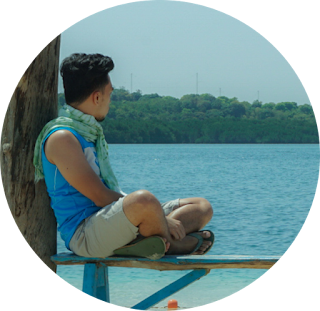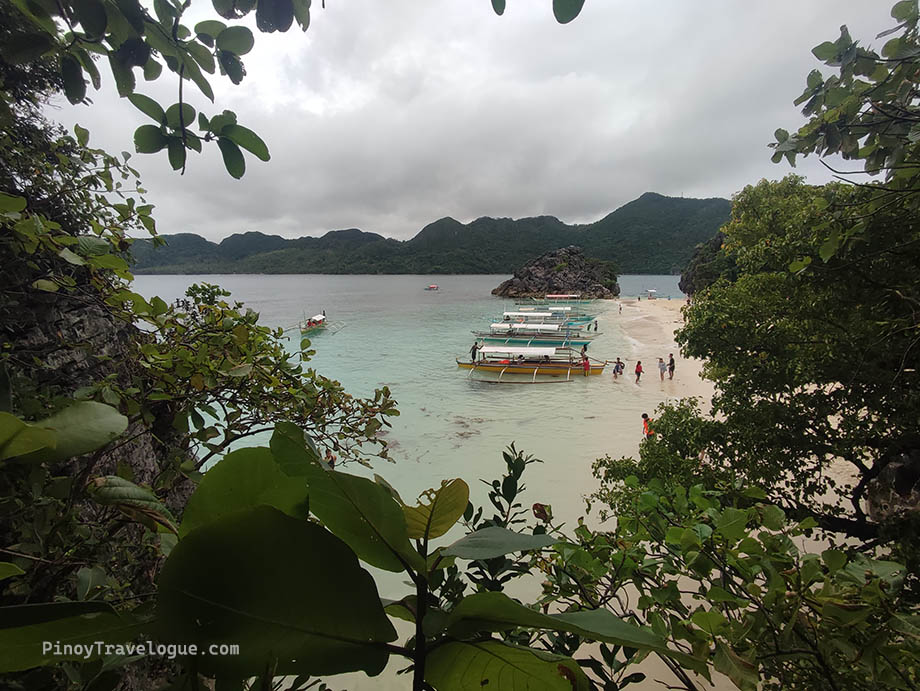 |
| Caramoan Islands, Camarines Sur |
I was fresh out of the university when in 2012, the American hit reality TV series Survivor made the local headlines. The show's long-time host, Jeff Probst, in a live broadcast of a season finale, announced that their upcoming new season had just finished filming in the Philippines—in the islands of Caramoan, whose popularity then was far from what it is now.
Before the well-known U.S. version, several Survivor franchises already used the islands for their location, including the French, Israeli, Bulgarian, Serbian, Swedish, Norwegian, Danish, Belgian and Indian editions. It was, however, America’s top-rated Survivor: Philippines that catalyzed Caramoan’s tourism potential, locally and globally.
Caramoan Peninsula
The said reality show revolves around the players who are forced to live off meager supplies while in a secluded island for over a month, pitting each other during the course of the game with challenges of physical endurance and mental abilities, in exchange for rewards and immunity from elimination, until the competition’s lone winner or the “sole survivor” emerges.
In order to achieve the “survival” concept, the production often requires isolated (or at least seemingly deserted), uninhabited and unsullied tropical islands. Being a Survivor location—and an apparent favorite—could say a lot about Caramoan. Its islands’ pristine environs simply made the cut.
Caramoan municipality nestles at the tip of the eponymous Caramoan Peninsula, which juts out east of the much larger peninsula occupied by the entire Bicol Region. Caramoan is the eastern frontier of Camarines Sur province, the nearest town to the neighboring, equally splendid island province of Catanduanes.
READ ALSO: Island Hopping: Treasures of Ticao Island, Masbate
 |
| Lahos Island, one of Survivor's filming locations |
Off the coast of the peninsula, there are more than 30 islands and numerous islets. At least 10 of these are under Caramoan and therefore the town’s main attraction because of the opportunity for no ordinary island hopping—it was a rugged but scenic one.
Tugawe Cove, a Secluded Resort
Exploring Caramoan’s islands first entails finding a host who would facilitate the island activities and, if staying for a couple of nights, a remarkably pleasant stay. Most resorts in Caramoan are concentrated near the town center, on the shores closer to the islands, but there are also a handful of lodgings that are “hidden,” tucked in between a beachfront and a lush jungle that is unavailable for land travel. Such was our home for a night, Tugawe Cove Resort, located in the remotest part of Brgy. Colongcogong.
Tugawe Cove is still part of mainland Luzon, but a boat ride is the only way to reach the resort due to the lack of road network leading to it. From our home in Rizal province, we drove for 10 hours and reached Talisay Port in San Jose municipality, which is still about two and a half hours from Caramoan.
From Manila, downtown Caramoan is usually a 12-hour drive. Talisay Port is one of the jump-off points to the far-flung resort. There is another wharf that would require a shorter sea travel, Guijalo Port in Caramoan, but the resort managers directed us to Talisay for reasons I did not ask.
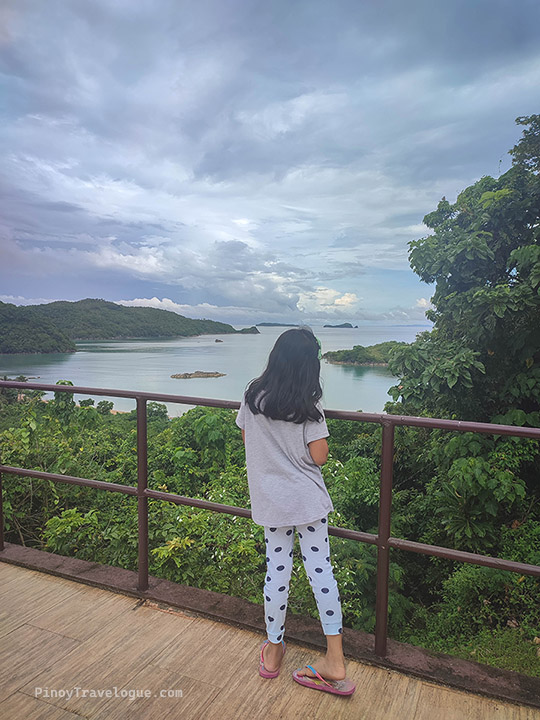 |
| View from Tugawe Cove Resort |
 |
| Tugawe Cove's infinity pool |
Tugawe Cove Resort is situated on a hill, near the tip of Caramoan Peninsula. It overlooks the tranquil waters of Maqueda Channel, the strait that separates the peninsula from Catanduanes Island. On one of the resort's infinity pools—there are two, the other one is on the beachfront down the hill—there is a sweeping vista of the seemingly uninhabited isles of Loto, Litao and Palompon, islands which are not included in the usual island hopping itineraries.
“We can start as early as one Sir, para marami pa tayong mapuntahan” (We can start as early as one (o’clock) Sir, so we can visit more islands as possible), said the resort staffer as we wait for our pre-ordered lunch and browse through the activities they offer. Apart from island hopping, Tugawe provides snorkeling, fishing (and cooking the fresh catch afterwards), trekking and picnic at the nearby lighthouse, plankton watching, which is available only during the new moon, and other usual water activities like kayaking and paddleboarding.
 |
| Kayaking in Caramoan | via Tugawe Cove Resort |
We reached the resort at lunchtime, arriving at their beachfront after a grueling two-hour boat ride from Talisay Port. From there, the resort's shuttle took us for a five-minute uphill ride, which cuts through a thick foliage, until reaching the resort’s main lobby. Tugawe Cove Resort was indeed lush and secluded, a perfect definition of a tropical escape.
Islands of Caramoan
We started with the islands right after lunch. It was past one. Each of the islands has a distinct personality, one might say. Sabitang Laya Island is said to have the longest white sand beach in Caramoan. Malarad Island is home to the popular Tayak Lagoon, a relatively deep brackish lake with emerald waters surrounded by towering limestone cliffs.
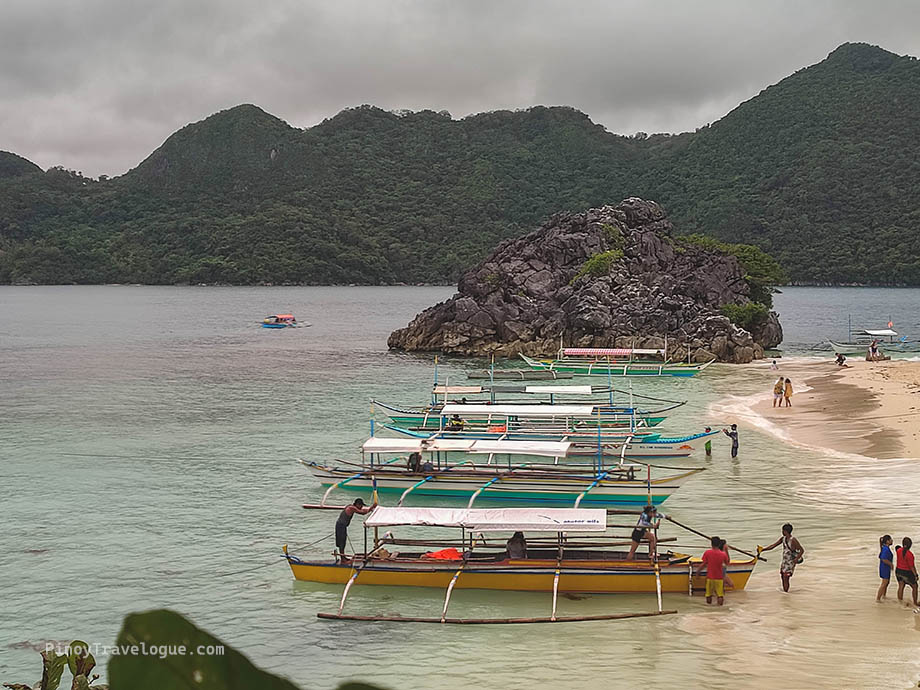 |
| Island hopping boats parked at Matukad Island |
Lahos Island, one of Survivor’s filming locations, says our tour guide, has twin beaches. Hidden in the middle of Matukad Island is a shallow lake with an interesting story, and what sets Pitogo Island apart from the rest is its pebble-covered beach.
Limestone rock formations abound in Caramoan. It was these craggy masses of rocks that engender a breathtaking island hopping trip. They hide beaches and coves from plain sight, which then gives Caramoan its reclusive, survival-ish vibe.
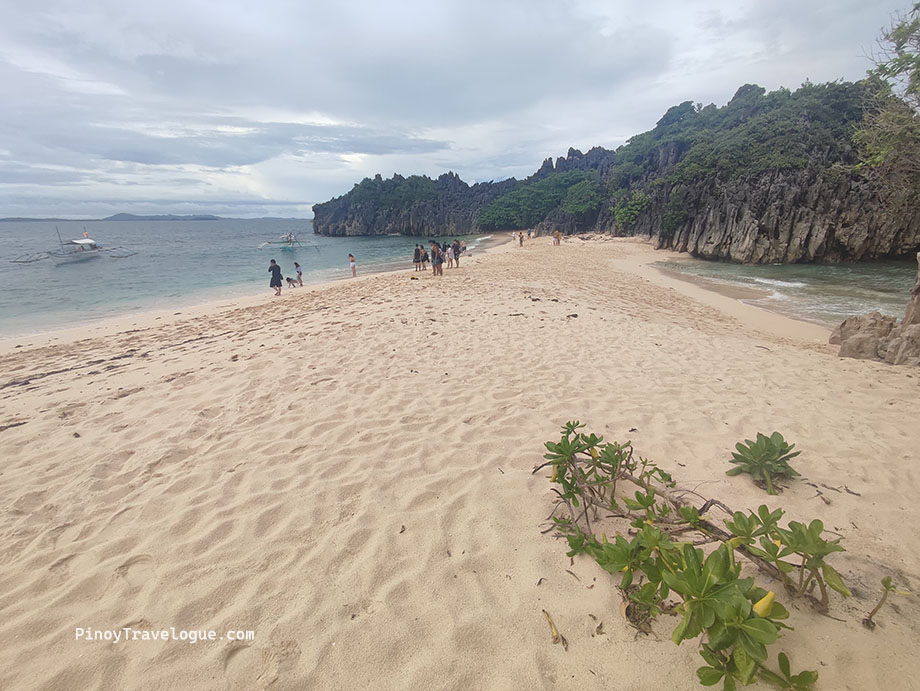 |
| Twin beaches of Lahos Island |
While every island is distinct in their own way, each island is dotted by limestone walls. The twin beaches of Lahos are guarded by two gigantic rock formations. When the tide is high, says our guide, local fishermen use these rock walls as markers of the island, whose beaches are currently underwater, to avoid their boats running aground. In Pitogo, when one stands upon its pebbled shore, the horizon is peppered with lush mountains and limestone isles of varying sizes. In Matukad Island, its hidden lagoon is obscured from the main beach by these towering rocks.
Matukad's Enchanted Bangus and Lagoon
Alongside Matukad’s cream sands that some people describe as fine as the sands of Boracay, it is the “Enchanted Lagoon” that draws tourists to the island. Two large-sized bangus (milkfish) that are deemed enchanted wander the shallow waters of the mossy lake. Lore has it that it is ominous to catch, eat or even go near these eremitic fishes. How those fishes went inside the cloistered lake, no one knows according to a local.
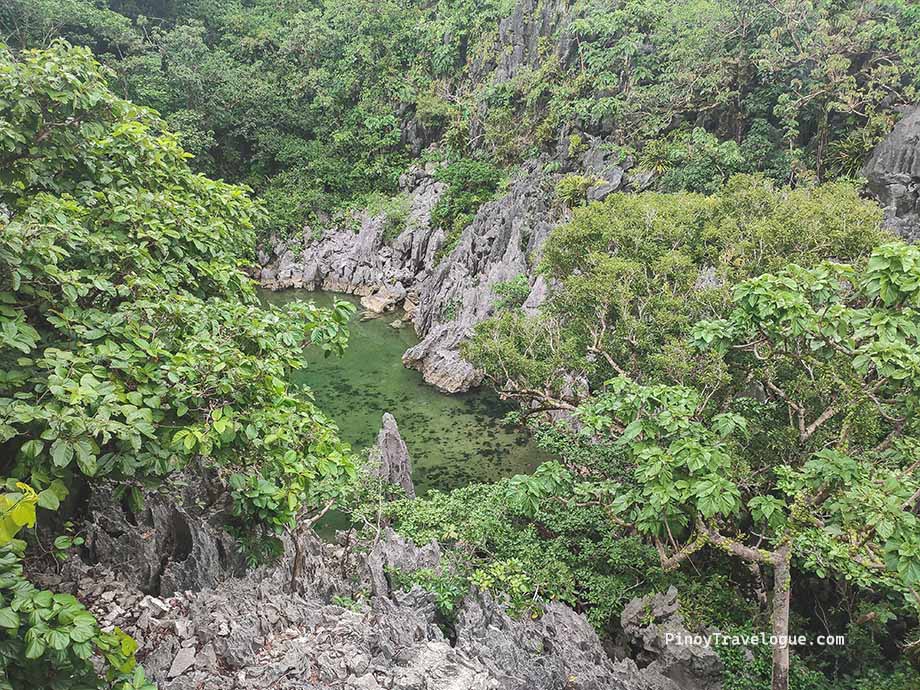 |
| Matukad Island's hidden lagoon |
The local belief that the legend was true began decades ago, when a local fisherman, despite the warnings, went home with one of the fishes from the lagoon. A couple of days after their family shared the meal, one of the children got sick and eventually perished. Since then, the locals left the fishes untouched.
“Nag-wish po ba kayo, Sir?” (Did you make a wish, Sir?), a local islander asked me when I told him that I was able to spot Matukad Island’s “enchanted bangus.” As it turns out, for tourists, the fabled fishes are believed to bring good luck.
But like other “good” things in life, trying to find the fishes requires some effort and, for this particular feat, some muscles and courage. The secret lagoon can be accessed only by braving the vertical limestone cliff from Matukad Beach. The sharp edges of the cliff and the fact that the climb is done without a harness or at least a supporting rope made it riskier. Nothing to hold on to but the uneven corners of the rocks and the protruding tree branches.
 |
| Climbing up the limestone formation to get a glimpse of the enchanted lagoon |
A view of the partially hidden lake ensues right after reaching the top of the cliff that, to my assumption, towers at roughly 15 meters. The Enchanted Lagoon is really not for the faint of heart.
Lazing Around
We reached the next island, Pitogo, at around four, when the waves were already crashing with increased intensity. Thus, the end of the island trip. It is best to begin hitting the seas in the morning to make the most out of Caramoan islands, especially when staying in a remote resort like Tugawe Cove. Due to its distance, the boat ride consumed more than an hour before we reached our first island.
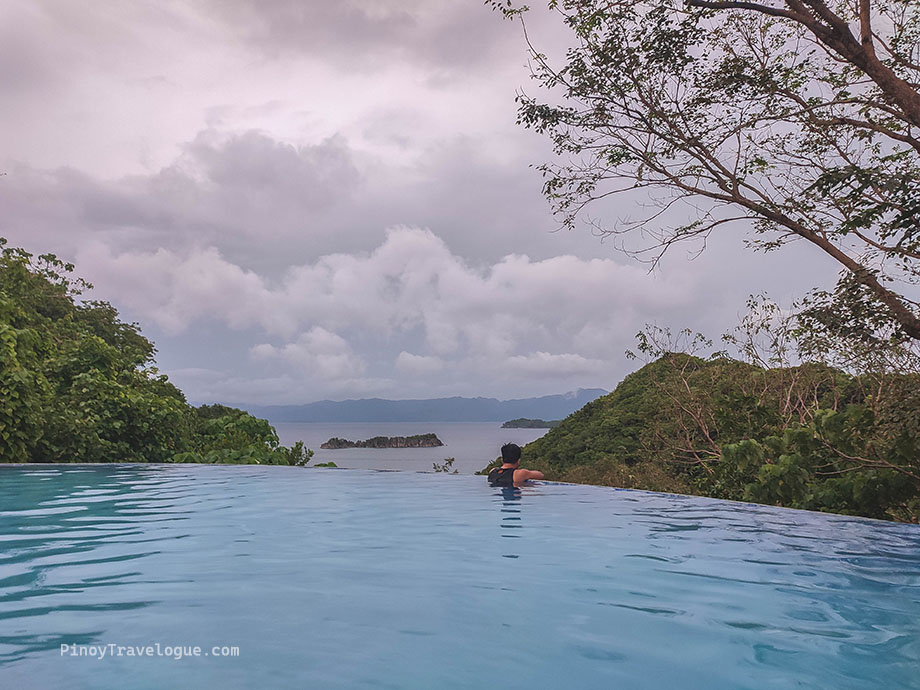 |
| Lazing at Tugawe's overlooking swimming pool |
Back in the resort, we spent the rest of the day and the next morning pleasantly lazing around. Swimming, lounging beside the hilltop infinity pool, relishing the cove’s lake and the beachfront down the hill. It was a much needed slow down from a normally bustling life.
Visiting Caramoan has Survivor’s element in itself. Getting there, taking the numbing 12-hour drive, though it is the most economical, would require a lot of patience. The faster yet pricier, flying to Naga City in Camarines Sur or to Virac in Catanduanes, would still entail at least three hours of combined sea and/or land travel. They say the more it is hard to reach, the more rewarding the destination is. Caramoan is no exception. Its pristine beaches, remote coves and hidden lakes are ideal for a sought-after tropical escape.
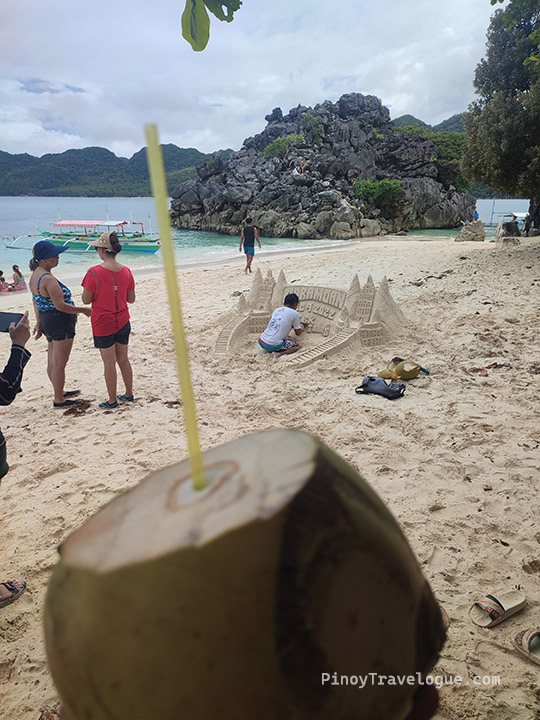 |
| Fresh buko juice at Matukad Island |
How to Go to Caramoan
From Manila, by car, downtown Caramoan is usually a 12-hour drive.
There are no passenger buses from Manila that go directly to Caramoan, but several bus lines (in Cubao, Pasay and Alabang) have daily trips to Naga City, such as RSL, Philtranco, Isarog, Amihan, Raymond, Executive and Penafrancia. Travel time takes 8 hours, then from Naga to Caramoan takes another 5 hours via bus or jeepney. One may also fly from Manila to Naga Airport for a shorter travel time.
Another route is via Catanduanes. From there, Caramoan is reachable via a two-hour boat ride from Codon Port located in San Andres town. To go to Catanduanes, one may take a bus at the Paranaque Integrated Terminal Exchange (PITX) that goes directly to Virac, or fly from Manila to Virac Airport.
This article was originally published in the May 2023 issue of Enrich magazine (with some minor revisions and additional details).

